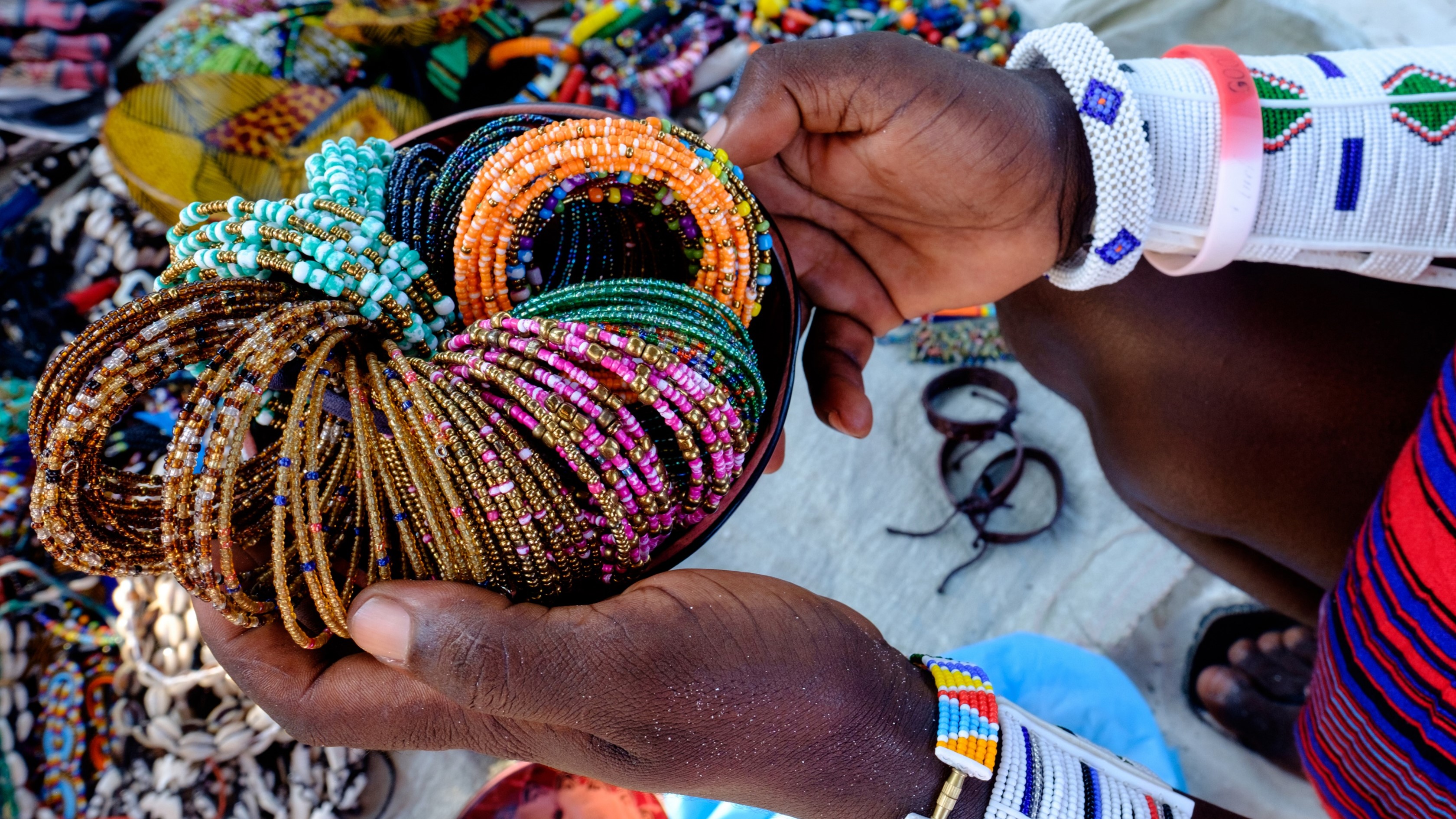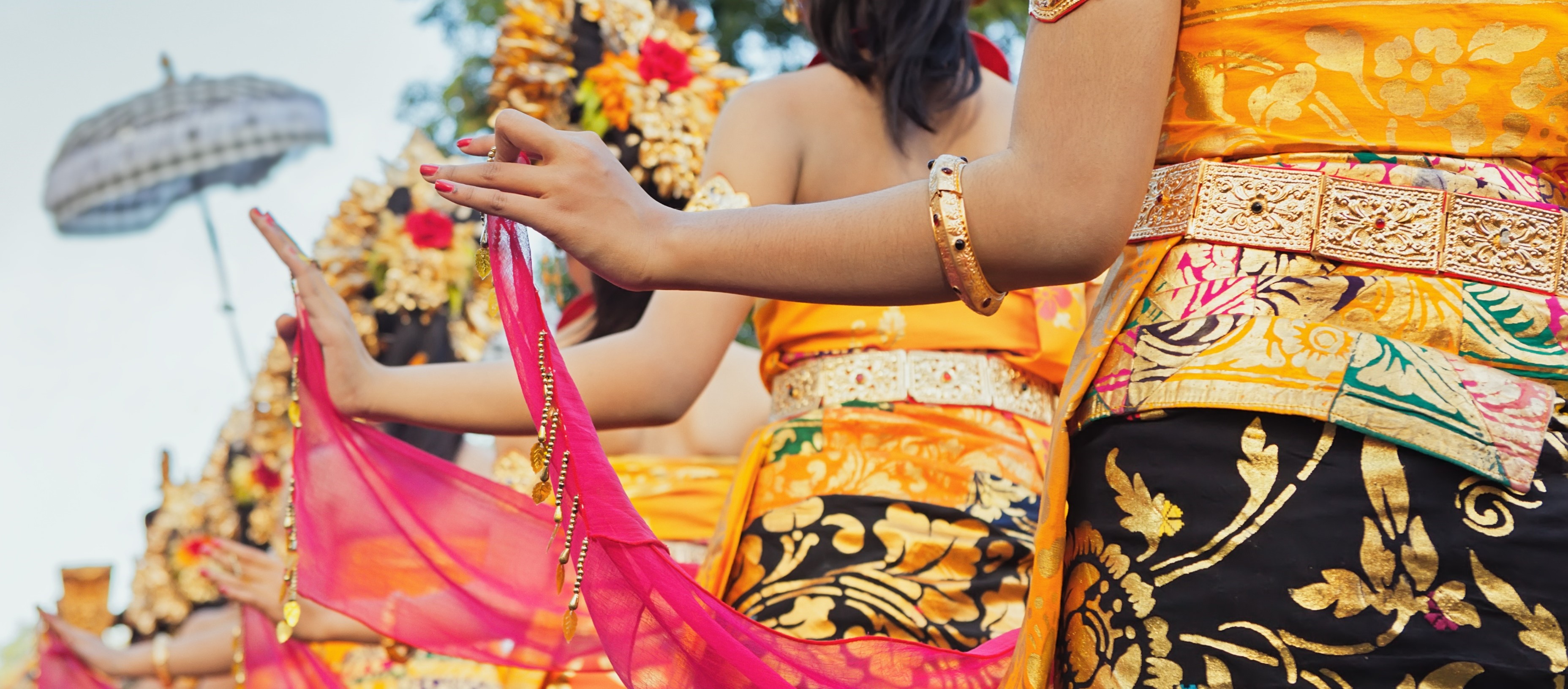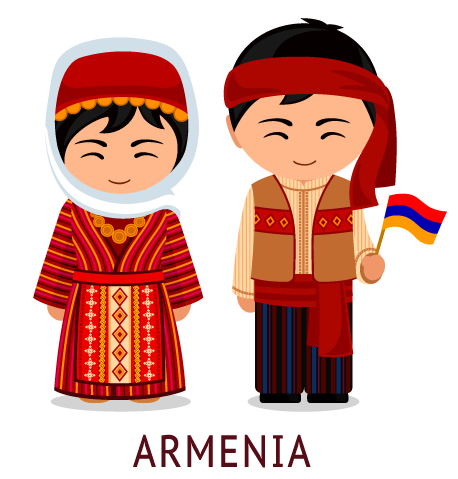
ARMENIA
Taraz: a traditional men's and women's clothing worn in Armenia, typically made from wool or cotton and characterized by its long, flowing shape and decorative embroidery.
Ararat: traditional men's hat worn in Armenia, typically made from felt or wool and characterized by its round shape and wide brim.
Papakha: a traditional men's hat worn in Armenia and other Caucasus countries, typically made from sheepskin or felt and characterized by its circular shape and fur or woolen trim.
Vordan karmir: traditional women's headscarf worn in Armenia, typically made from silk or cotton and characterized by its bright red color.
Poghos: traditional men's long coat worn in Armenia, typically made from wool or cotton and characterized by its long, flowing shape and decorative embroidery.
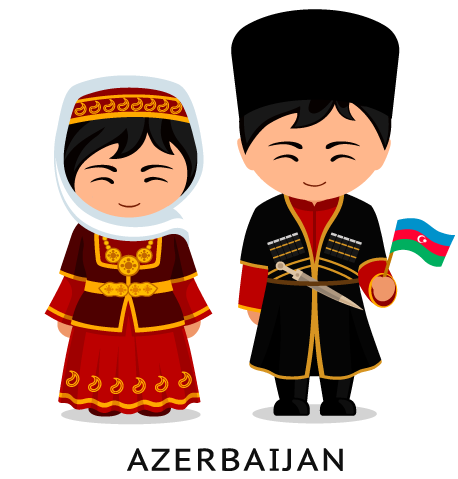
AZERBAIJAN
Chokha: a traditional men's coat worn in Azerbaijan and other Caucasus countries, typically made from wool or cotton and characterized by its high collar, buttoned front, and decorative embroidery.
Papakha: a traditional men's hat worn in Azerbaijan and other Caucasus countries, typically made from sheepskin or felt and characterized by its circular shape and fur or woolen trim.
Kelaghayi: a traditional women's headscarf worn in Azerbaijan, typically made from silk or cotton and characterized by its brightly colored patterns and tassels.
Parandal: a traditional women's scarf worn in Azerbaijan, typically worn over the head and shoulders and characterized by its brightly colored patterns and tassels.
Terlik: traditional slippers worn by men and women in Azerbaijan, typically made from leather or felt and worn indoors.
Qaraqalpak: traditional dress worn by Qaraqalpaq ethnic group in Azerbaijan, typically made of wool and characterized by its vibrant colors and geometric patterns.
Balaxanı: traditional dress worn by Balaxani ethnic group in Azerbaijan, typically made of wool and characterized by its vibrant colors and geometric patterns.

BAHRAIN
Ghutra: a square or rectangular headscarf worn by men in Bahrain and other Gulf countries. It is typically made from a lightweight cotton or silk fabric, and is worn folded into a triangle and held in place with an agal (black cord).
Thobe: a long, loose-fitting garment worn by men in Bahrain and other Gulf countries. It typically has long sleeves and a high collar, and is made from a light, breathable fabric.
Shayla: a rectangular scarf that drapes over the head and shoulders, worn by some Muslim women. It is often worn with an abaya.
Bisht: a traditional men's cloak worn in Bahrain and other Gulf countries, usually made from a thick woolen fabric and worn on special occasions.
Kandura: a traditional men's dress worn in Bahrain and other Gulf countries, similar to the thobe but usually made from a finer fabric and worn on special occasions.
Al-Ara'a: a traditional men's headgear worn in Bahrain, it's a white or off-white head cloth wrapped around the head and held in place with an agal.
.
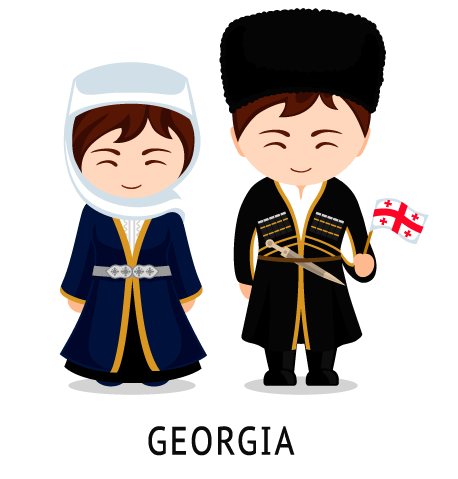
GEORGIA
Chokha: a traditional men's coat worn in Georgia and other Caucasus countries, typically made from wool or cotton and characterized by its high collar, buttoned front, and decorative embroidery.
Papakha: a traditional men's hat worn in Georgia and other Caucasus countries, typically made from sheepskin or felt and characterized by its circular shape and fur or woolen trim.
Kelaghayi: a traditional women's headscarf worn in Georgia, typically made from silk or cotton and characterized by its brightly colored patterns and tassels.
Jaba: a traditional women's long, flowing overcoat worn in Georgia, typically made from wool or cotton and characterized by its flared shape and decorative embroidery.
Parandal: a traditional women's scarf worn in Georgia, typically worn over the head and shoulders and characterized by its brightly colored patterns and tassels.
Terlik: traditional slippers worn by men and women in Georgia, typically made from leather or felt and worn indoors.
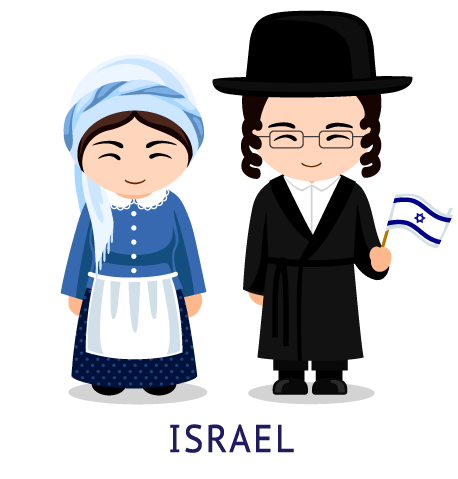
ISRAEL
Kippah: a small, round head covering worn by Jewish men, also known as a yarmulke. It is typically worn during prayer or religious ceremonies.
Tallit: a traditional Jewish prayer shawl, worn by men during morning prayers. It is typically made from wool or silk and has fringes (Tzitzit) on the four corners.
Tzitzit: fringes on the four corners of the tallit, worn by men during morning prayers.
Sheitel: a wig worn by some married Orthodox Jewish women as a sign of modesty.
Tzniut: a concept in Jewish law and tradition that refers to the practice of modesty and privacy in dress and behavior.
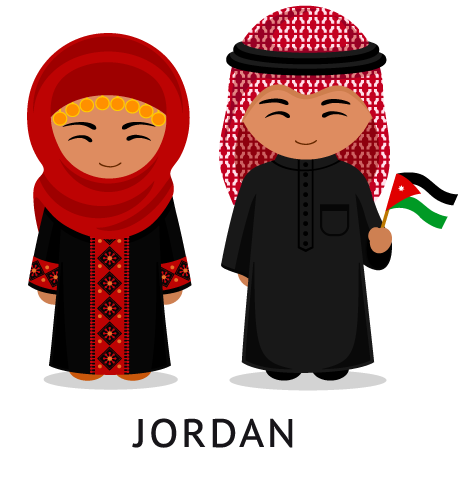
JORDAN
Keffiyeh: a traditional headscarf worn by men in Jordan and other Arab countries. It is typically made from a lightweight cotton or wool fabric and is folded and wrapped around the head, held in place with an agal (black cord).
Ghutra: a square or rectangular headscarf worn by men in Jordan and other Arab countries. It is typically made from a lightweight cotton or silk fabric, and is worn folded into a triangle and held in place with an agal (black cord).
Thobe: a long, loose-fitting garment worn by men in Jordan and other Arab countries. It typically has long sleeves and a high collar, and is made from a light, breathable fabric.
Shayla: a rectangular scarf that drapes over the head and shoulders, worn by some Muslim women. It is often worn with an abaya.
Burqa: a full-body veil worn by some Muslim women, covering the entire face and body, with a grille or mesh to see through.
Dishdasha: a traditional long gown worn by men in Jordan, it's similar to the thobe.
Tarboush: a traditional headgear worn by men, it's a felt hat with a black tassel on top.
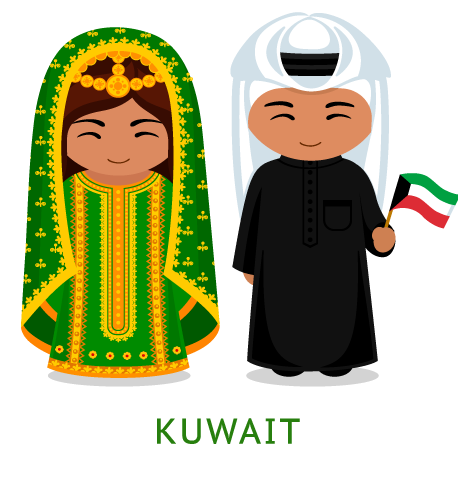
KUWAIT
Thobe or dishdasha: a traditional Arabic garment worn by men, typically has long sleeves and a collar, made of lightweight, breathable fabrics.
Ghutra: a traditional headscarf worn by men in the Arab world, typically made of cotton or wool and held in place by an agal, a black cord.
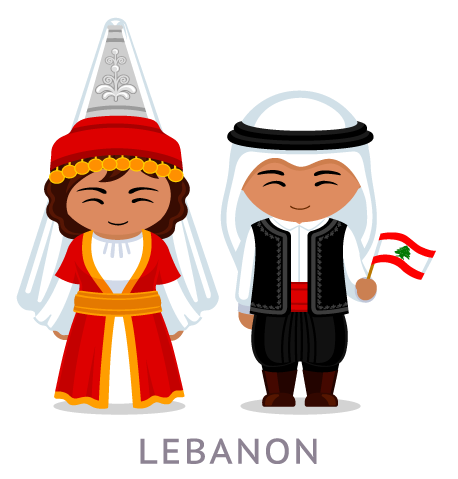
LEBANON
Dishdasha: a traditional Arabic male garment, worn by men in formal settings and Gulf countries, it is a long, white, collarless gown worn over a pair of pants.
Tarbouche: a traditional headwear that originated in the Ottoman Empire, it is a felt hat shaped like a cone with a tassel on top, worn with traditional Arabic clothing, commonly worn in the Middle East and North Africa.
Hijab: a headscarf worn by some Muslim women as a sign of modesty and privacy, it is worn as a symbol of religious piety and cultural tradition, it can come in different styles and colours and can be worn with different types of clothing.
Serya: a traditional long dress worn by Maronite Christian women
Sarwal: traditional baggy pants worn by the Druze women.
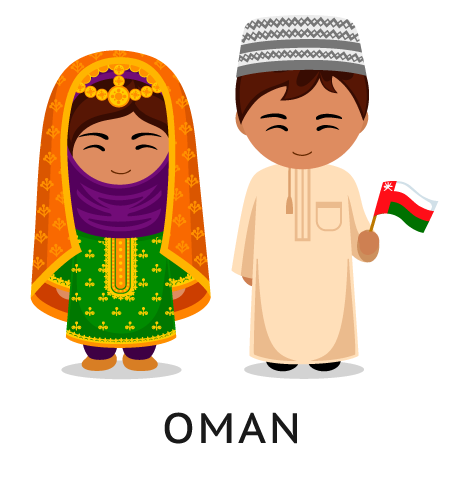
OMA
Dishdasha: a traditional long gown worn by men in Oman and other Gulf countries, it's similar to the thobe.
Ghutra: a square or rectangular headscarf worn by men in Oman and other Gulf countries. It is typically made from a lightweight cotton or silk fabric, and is worn folded into a triangle and held in place with an agal (black cord).
Thobe: a long, loose-fitting garment worn by men in Oman and other Gulf countries. It typically has long sleeves and a high collar, and is made from a light, breathable fabric.
Shayla: a rectangular scarf that drapes over the head and shoulders, worn by some Muslim women. It is often worn with an abaya.
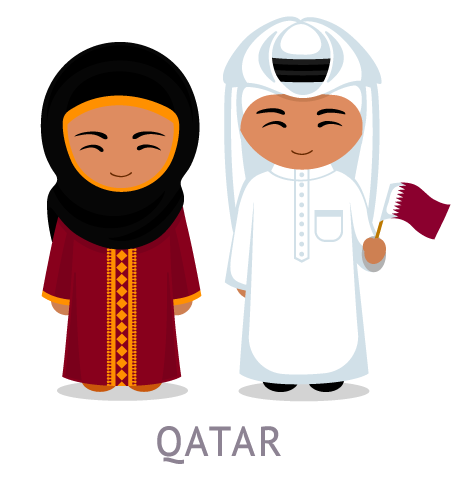
QATAR
Thobe: a long, loose-fitting garment worn by men in Qatar and other Gulf countries. It typically has long sleeves and a high collar, and is made from a light, breathable fabric.
Ghutra: a square or rectangular headscarf worn by men in Qatar and other Gulf countries.
Shayla: a rectangular scarf that drapes over the head and shoulders, worn by some Muslim women. It is often worn with an abaya.
Burqa: a full-body veil worn by some Muslim women, covering the entire face and body, with a grille or mesh to see through.
.
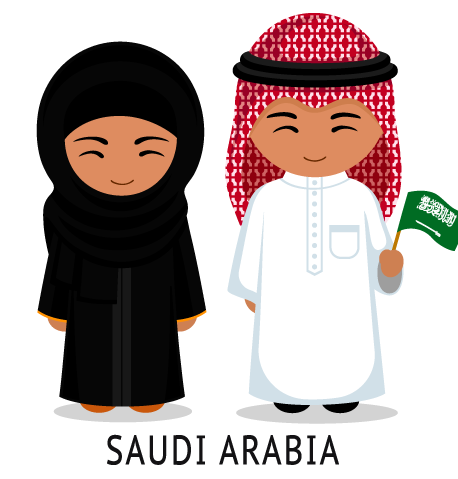
SAUDI ARABIA
Thobe: a traditional Arabian garment worn by men, it is a long, loose-fitting shirt that reaches the ankles, usually white in colour but can be found in other colours.
Ghutra: also known as a keffiyeh, is a traditional headscarf worn by men in the Middle East, typically made of cotton or a cotton-polyester blend, worn with a ring-shaped headband called an agal.
Shayla: a traditional headscarf worn in Saudi Arabia by Muslim women, usually paired with an abaya, it is considered a modest dress.
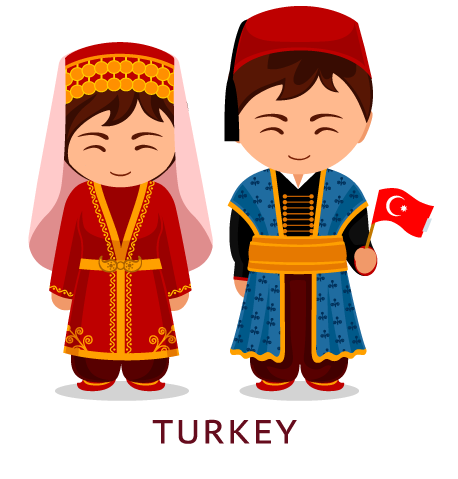
TURKEY
Fez: a traditional men's hat worn in Turkey and other parts of the Middle East, typically made from felt and characterized by its cylindrical shape and flat top.
Tarbush: a traditional men's headgear worn in Turkey, it's a felt hat with a tassel on top, it was worn by Ottoman elite.
Turban: a traditional headwear worn by men in Turkey, it is a long piece of cloth wrapped around the head.
Jilbab: a long, loose-fitting overcoat worn by Muslim women in Turkey, typically made from lightweight, opaque fabric and covers the entire body.
Farasha: a traditional dress worn by some Turkish women, typically made from lightweight, flowy fabric and characterized by its long, flowing shape and decorative embroidery.
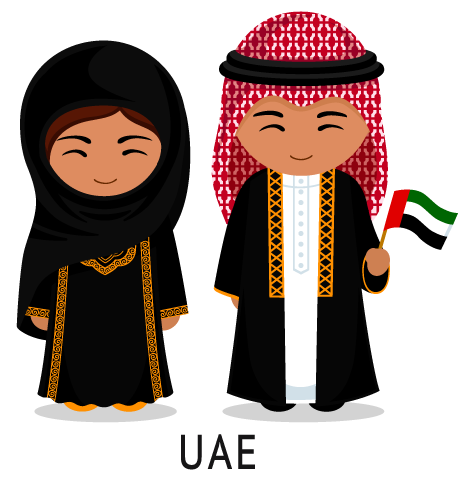
UNITED ARAB EMIRATES
Dishdasha: a traditional Arabic male garment worn over a pair of pants, it is long, white, collarless gown, considered as formal wear, worn by men of all ages.
Ghutra: a traditional headscarf worn by men in the UAE and other Gulf countries, it's a large square or rectangular headscarf made from cotton or wool, traditionally white.
Abaya: a traditional Muslim garment worn by women that covers the body from the shoulders to the feet, typically worn in the Arab states of the Persian Gulf, and worn for modest clothing that covers the body and does not reveal the shape of the body.
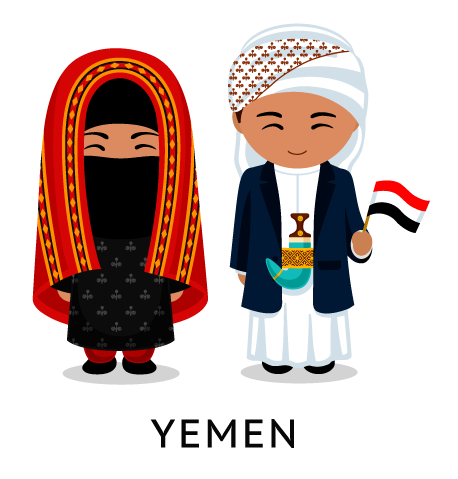
YEMEN
Thawb: a traditional Arabic garment worn by men and women in various Arab countries, but it is commonly worn by women in Yemen, it is a long, flowing dress that covers the entire body and typically has long sleeves.
Niqab: a type of veil worn by some Muslim women that covers the face, leaving the eyes visible and it is typically worn in conjunction with a headscarf and long.
